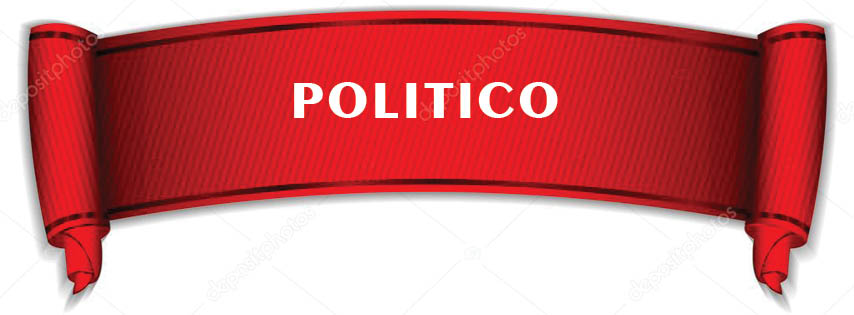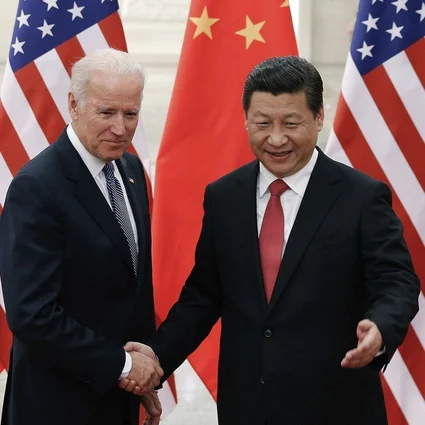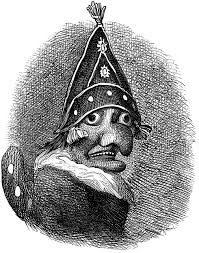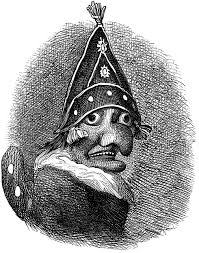
The Thucydides Trap
The best lens for clarifying the dynamics of the U.S-China relationship may be the Thucydides Trap. Contributor MICHELLE SHAIL examines the structural stress that occurs when a "rising" power threatens to displace a "ruling" nation.

U.S. - China Presidents Biden and Xi via AP
Several years ago, we transferred our three children from a private to public school because we wanted them to experience diverse nationalities, explore different thought, and to cooperate with and understand the unique and extraordinary cultures around the world. And because the school looks and in many ways feels like the United Nations – we got what we asked for! What we did not know, but quickly discovered, is the amazing concentration of children from Asia. In fact, these children are among the brightest in the school, and their focus and diligence is reflected by a demographic which comprise a large percent of our suburban neighbor. This is a stunning change just inside the last 30 years, and I’m curious as to how these talented engineers, dentists, programmers and doctors from the other side of the world came to live in and dominate our middle class America. The Sleeping Dragon
China has the largest population of 1.3 billion people, the largest standing army and second largest defense budget. They have the fastest growing economy, are the world’s largest exporter and second largest importer. By nominal GDP and purchasing power parity, China is the world’s second largest economy behind the United States. And to understand how and why China is the holder of $900 Billion in US debt, stakeholders in major corporations and so amazingly influential with the White House, we have to consider the history of this amazingly resilient country.
China’s history feels almost unfathomable, stretching back to the 13th Century BC. Prior to 1949 China was ruled by Dynasties – hegemonic empires ruled by emperors and empresses. The Tang Dynasty (618-907) in 5th Century China was one of numerous hereditary monarchies. As growth and prosperity intermingled with decline and instability, good fortune shone on the Tang Dynasty. This was predominately a period of innovation, political stability, and economic constancy. Some argue China was the most populous and prosperous country in the world at that time. This high point in Chinese civilization promoted arts and culture, producing famous Chinese poets (Du Fu and Li Bai), painters (Han Gan, Zhang Xuan and Zhou Fang) and a variety of scholarly works of literature.
Like all civilizations grappling with strategies for growth, prosperity, stability and security, the Imperial Dynasty experimented with cultural identities. The Tang Dynasty, for instance, rejected the hierarchal warrior nobility class system in favor of a more civil service system drawn from the Chinese philosopher Confucius. If the United States is to compete and collaborate with the country soon to unseat our preeminence as the world’s largest economy, we must appreciate that which has influenced Chinese culture for 2500 years. Confucianism is a complex system of moral, social and political ideals rooted in the notion that humans are evolving souls seeking actualization through self-cultivation and communal relations. Confucius believed that the study of history and literature was the most important path to wisdom. As the official state teaching of China until 1912, his influence resonated in China’s attention to virtue and benevolence, which directly impacted their definition of civility and appropriate behavior. I can see this influence in our Chinese neighbors – their attention seems to be on their family, their children’s education and the job at hand. I do not ever get the sense that they are “trying to keep up with the Jones” and I’ve never witnessed them in unresolvable conflict with another neighbor.
I’ve just crossed the threshold of 40 and my perception of China’s political, social and economic identity has been shaped during that time. By US standards (and with the prompting of fashionable media outlets) we think of China’s form of government, Communism, as a pejorative. But given the alternative, Communism, under Mao Zedong, may have initially been seen as a saving grace. The last Imperial Dynasty fell in 1912 to the Kuomintang, known as the KMT. By World War II, however, the US began sponsoring an end to the spread of communism. The KMT had organized the country as the Republic of China (ROC) but was unsuccessful in unifying the country and leading it back to prosperity. And when Civil War shredded the country and its economy, Mao Zedong gained revolutionary momentum by appealing to the massive population of struggling peasants. The rules of ancient Chinese warfare suggest that to win the people one must first win the “hearts and minds” of the people. The Communist leader did just that by inserting his knowledge of history and military strategy into political, social, and economic schema. They promised land, distributed food, and developed humanitarian policies for prisoners of war and civilians. And when the Communists won the civil war in 1949, the KMT set up shop in Taiwan, America cut their diplomatic ties, and The People’s Republic of China was born!
Mao Zedong’s legacy as the great leader of the Communist party is a bit of a conundrum. Chairman Mao is revered in China as a brilliant strategist, courageous revolutionary, and savior of a nation. For as a poet, philosopher, and visionary he authored the economic, technological and cultural foundations of China’s present day success. But history holds his ideology accountable for millions of deaths, famine, and a decade of violent revolution that pitted labors against capitalist. With Mao’s death in 1976 came the end of 27 years of Maoism, and, as one of the oldest civilizations on earth, these masters of change again needed a new identity to propel them forward.
By the late 70’s and early 80’s, developed countries were succeeding with capitalism and consumer economies. And so China began their market-based economic reforms in 1978. This time with a new friend, America. It was through an intensely clandestine operation known as Marco Polo that staunch anti-communist President Richard M. Nixon reestablished diplomatic ties between China and the United States. This was during the Cold War and an improved relationship with China was an opportunity to put a tighter squeeze on the Soviet Union. Subsequently furthered by Ford and ensuing Presidents, the ties that bind between the United States and China grew stronger.
With foreign investment the Chinese government moved towards a mixed economic model. They relinquished control over the personal lives of their citizens, peasants were given land leases, and permission was granted for citizens to start their own businesses. These moves resulted in agricultural production and a stimulated economy. Feeding the flames of success further, the 1990s brought reforms by way of privatization, contracting out state-owned industry, lifting price controls, and easing protectionist policies and regulations.
In addition to moving towards a mixed government – communist social system and capitalist economic model, the government leverages a relic of the days of Mao; the infamous five year plans patterned from the Soviets. This is an enormous competitive advantage for China. Given the blow to the world economy in the last three years, some might want to call “foul.” They bring their domestic intellectual firepower together in economics, engineering, finance, technology and power industries. A detailed plan and strategy is devised that drives the country in a specific direction based on the trend of the world economy. Because of the communist social model very little stands in their way of gaining economic muscle. Targets are set, reforms initiated, and all development aligns with the goals of the five-year plan.
Universally we study history not for the sake of data, but because history teaches us about the future. At home in the US we tend to believe China is following us, but perhaps it is the other way around. Long before America and Wall Street dominated the world, China, under the Tang Dynasty, held the title as world leader. There may be disagreement as to when, but minimal debate to if China will surpass the United States as the world’s largest and most powerful economy. Given their ostensible success, what is our competitive advantage going forward? And what else might we imitate from the Chinese?A Journey of 1000 Miles
On the heels of a social studies report, my 11-year-old son asked what kind of government we have? "Democracy," he said. "No, wait! Are we a Republic?" It’s a loaded question to be sure, and ultimately I decided that we’d better research it a bit. Sometimes things appear a certain way on the surface but are really something different. A form of government settles many questions of cultural identity, the value of life, and how we sustain ourselves economically. And at the foundation of all systems of life and evolution, i.e., nature, governments, businesses or society, complexity increases and there is change.
Since mankind shifted from nomadic lifestyles to working in groups, we have chosen many ways of organizing ourselves. Plato (427 BC – 347 BC), a Classical Greek philosopher, mathematician and writer left an indelible mark on the topic of political theory. In his Socratic dialogue The Republic he debated justice, community, and mankind based on levels of wisdom, knowledge, power, money, and its relationship to happiness. In this he sketched the nature of political systems that not only characterized forms of government in 380 BC but that also are still seen in world systems today.
Plato theorized forms of government in terms of the virtues of one’s soul. The souls of wisdom and knowledge were “gold.” In an Aristocracy, a leader’s influence came through the study of knowledge and wisdom. The protectors and soldiers were “silver” while the remainder of citizens was “bronze.” The working class owned property, produced goods and services, and ultimately sustained the livelihood of the other two classes. Plato conceived that the cycling of power from one ‘soul level’ to the next created a new form of government. And that as souls of knowledge and wisdom moved further away from the center of influence, chaos and lawlessness would ensue and ultimately a tyranny would emerge.
Our founding fathers understood the history of Greek and Roman civilization. The Greeks established that the “Essence of freedom is proper limits of government.” In those efforts, they experienced a period of prosperity. But in their hesitation to establish a rule of law, ultimately they cycled from democracy to anarchy to tyranny. Much of our political system was conceived from the experiences of the Romans. They established a rule of law, which limited the government and allowed their people freedom to innovate and trade with one another. This led to stability in the community and to economic growth and prosperity. But the people and the leaders grew lackadaisical with the responsibility of a republic. Just as Plato supposed, this gave way to an abuse of power, loss of order, and a welfare strategy known as “Bread and Circuses.” Keeping the masses (or working Middle Class) “fed and amused” enabled a clever few to ultimately control the economy. Hail Caesar!
A modern view of political systems defines government on a spectrum -- from zero to absolute control. Government on both extremes, however, are not sustainable. Anarchy (no government) is every man for himself and wholly unproductive from an economic standpoint. In this model, we can never leave our homes and properties for fear of it being taken. Without freedom to move about, trade, and to stir the economic engine there is no community. On the opposite end of the spectrum is total governmental control, which has been called many names: Dictatorship, Communism, Fascism, and Nazism to name a few. While we often think these systems are ruled by one they are actually ruled by a very small group sometimes with one point person or figure head. Oligarchy (government by the few) is characterized by a wide margin between the rich and poor with only the rich having influence in policy. It’s the most common form of government in history and today with both Democracies and the Republics falling into this view.
Back to my son’s question. Democracy means “the majority rule.” We talk alot about spreading democracy to other parts of the world. Democracy is dangerous and unstable because there is no restraint on the majority. In fact, our founding fathers did everything to ensure the United States did not establish a democracy. Upon exiting the Constitutional Convention, Benjamin Franklin was asked by a woman, “Sir, what have you given us?” His response, “A Republic, ma’am if you can keep it.” A Republic, on the other hand, means “a public thing” or “government ruled by law.” We often think of democracy as being at the core of our values and governing system. Yet the word “democracy” is not found anywhere in the Declaration of Independence or US Constitution. Ultimately, the United States was intended as a Republic -- ruled by law and left alone by the government to produce, trade and prosper.
Communism is defined as “a system of social organization in which all economic and social activity is controlled by a totalitarian state dominated by a single and self-perpetuating political party.” Today, China’s one-party system oligarchy directly governs 22 provinces, five autonomous regions, four directly administered municipalities, and two highly autonomous special administrative regions. While economic growth has fueled liberalization, open opposition parties, with limited results, have emerged, thus widening the gap between the rich and poor in China. China is far from what the United States would define as a democracy or republic. But the internationally distinguished scholar, J. Rufus Fears, reminds us that freedom is not a universal value. President Hu echoed that sentiment during his visit to the United States in January when he called for respect concerning the opposing social ideologies.
But the marks of change are being recorded in and outside their country on a daily bases. I can hardly open a newspaper or magazine without an article about China’s scuffle between growth in a global economy and keeping their society closed. China’s love-hate relationship with the Internet and Google is a prime example. If we’ve learned anything from the technological revolution over the last 20 years it’s that technology and the Internet have transformed the way information is shared, passed or stolen, and is narrowing the ties that connects us with others. It has brought the unimaginable (both good and bad) alive; it has spawned creativity and growth and has given common citizens access to a universe of knowledge and information with a touch of a few keystrokes. The Chinese government wants in on the Google and Internet action, yet wants to limit it for their citizens – rendering themselves in paranoid game of cat and mouse. They understand the Internet’s power and indeed leverage it intensively for hacking into information regarding dissenters and competitors while simultaneously attempting to force Google to censor information their citizen’s could discover.
While some in their elite class grapple with the paradox of the Internet and keeping the masses at bay, others are focused on how to shift from a low cost manufacturing economy to a creator, developer, inventor identity. Wait, isn’t that our piece of the world puzzle -- we dream it, they build it? As Plato suggested, maybe we are witnessing the glacier movement to a republic in China? They have a long way to go, but on the other hand, we have seen repeatedly what China can accomplish through their uncanny discipline, focus and diligence. They have turned their sights to higher-quality goods and services; they have tripled their investment in education; they are poised to become a consumer economy, all of which means a stronger, wealthier middle class, which in turn will demand more freedom. And here’s the most chilling part, they know it will mean more freedom for their people. In a story from Time Magazine, Fareed Zakaria of CNN talked with the Premier of the People’s Republic of China, Wen Jiabao, about the importance of their human capital as its relates to accomplishing their goals. Jiabao told Fareed “It is the people and the strength of the people that determine the future of the country and history. The wish and will of the people are not stoppable. Those who go along with the trend will thrive and those who go against the trend will fail.” This quote, of course, was ultimately censored and never reached the Chinese people.
As this Republic competes with that Oligarchy and the experiences of the Greeks and Romans lingers in the past, I am reminded that freedom is both a privilege and responsibility that requires innovation. My son’s generation represents the future of our country. Does he understand the definition of our government, and will he learn and embrace the principles of wisdom necessary to sustain it?The Road Less Taken
Since the bottom fell out of the economy, the buzzword is “innovation.” We see it on billboards, advertisements, and hear it on the radio. It’s showing up in corporate mission statements and being infused as a guiding principle for organizations. Individuals, corporations and organizations are experimenting once again with words like engagement, creativity, complexity and transformation. Sounds cool and we all want in on the next big thing, but what does it mean?
Innovation is defined as “the introduction of something new, a new idea, a new method or device.” It’s an economic concept. Inventions (light bulb, cars, computers, medicines, weapons etc.) have to have a way of getting into the markets and creating returns. Making meaning of the inventions and returning dollars is what establishes a product or service as valuable by economic standards. Innovation makes that process possible.
Joseph Schumpeter, a famous and influential social scientist and expert in economics explored markets and economies based on his idea of “creative destruction.” For Schumpeter “innovations are ‘new combinations’ that disturb whatever equilibrium exists in the economic system.” We can all relate to this in our experience with technology and the Internet over the last 15 years. It has transformed industry giants and staples on our economy such as publishing, newsgathering, advertising and music. As I mentioned earlier I just turned 40. If you are in my age group or older we remember records and cassette tapes, and thought CDs and DVDs were revolutionary. That was incremental change and peanuts compared to what a freshman from Northeastern University unleashed on the music industry – peer to peer file sharing – Napster. With the World Wide Web and a bit of code, the consumer of music no longer had to purchase a whole cd for $15 dollars. Instead, they could share songs with each other for free. And while the government and record executives looked for ways of censuring this coed’s power, Apple made meaning from chaos by wrapping a user-friendly interface around the technology, cutting a deal with music labels, and effectively giving birth to iTunes. In fact, Apple made it easier, more interesting and way more fun to buy than to steal.
America has a long and successful history with invention, and innovation has propelled us to the front of the line over the last 50 years. The car, airplane and computer are all US inventions, and manifestations of our economic principles, political freedoms, and of a patriotic and creative people. China, however, may disrupt the world equilibrium. They are heavily invested in some of our biggest industries, they own a sizeable amount of our government and private debt, and are cutting deals with automakers and banks to set up shop in China. American companies are now looking to sell their products and services to China’s emerging consumer society.
Last month JP Morgan Chase and Morgan Stanley announced that they gained approval from Chinese regulators to form a joint venture in China. Goldman Sachs is already there, as is UBS, G.E., Credit Suisse, GM, and Deutsche Bank. Okay, I get it. It’s where the money is. In 2010 Chinese stock exchanges raised over $70 billion in IPOs, exceeding the US stock exchanges and Hong Kong exchanges for the first time. We love a quick buck, but there’s a sizeable risk to unpacking our bag of inventions and innovation tricks in China. They do not play by the same rulebook. Most anything on Chinese soil belongs to the Communist State not to the people and certainly not to foreigners. American companies are in a quandary over how to optimize the opportunities in China while still protecting their intelligential property and controlling interest. For example this is not Morgan Stanley’s first foray into the Chinese economy. In 1995 they teamed with the China Construction Bank. And peeking from the end of a New York Times article was this warning sign, “Although Morgan Stanley held a 35 percent stake in a very profitable firm, it lost management control and became a passive investor in the company!”
Our ability to show up in sleek suits, fancy titles, and giant egos is gone -- especially in China. We have spread our Western ideals all over the world in the last several decades, but never before to such a formidable audience, nor from such a compromised financial position. We do not command the respect we use to. We are deep in debt, fighting two wars, struggling with at least 10% unemployment, and cannot seem to get away from quantitative easing. In fact, the world economic community is now pushing for the US dollar to no longer be the global investment standard. As Hillary Clinton recently said, “It’s difficult to get tough with your banker!”
Innovation as an economic model is often employed in times of suppressed growth. But China is attempting to employ innovation in a brilliant way – while they are on the way up! They see the need and the opportunity for innovation, and true to their focused discipline are implementing a plan known as the “National Patent Development Strategy (2011-2020). The plan or guideline is created, supported and directed by the State, and places a significant focus on inventions: specifically with batteries, solar and wind, information technology, telecommunications, and technology manufacturing industries. They are also making rapid strides in the aviation industry with commercial and military aircraft development. The document outlines the goal of two million patents a year by 2015. To achieve this the Chinese government has offered incentives such as cash bonuses, better housing for individuals and tax breaks for companies. By comparison the United States had a bit more than 480,000 filed patents last year.
China also has a long history with inventions. The ancient Chinese created paper, gunpowder and printing but their political model blocked the innovative process – meaning they lacked a way of getting the invention into the market. At the heart of innovation is creativity and wise leadership that can tap into and extend that creativity, which necessitates freedom. This is where hyper rigorous linear thinking coupled with a splash of paranoia work against the Chinese. High-octane control and punishing environments either squash the creative process all together or at the very least limit the quality. The shift in economic policy has lessened some controls but they are still extraordinarily oppressed and fearful in terms of their political freedoms. Their constitution sets forth “fundamental rights” yet the state controlled benefit systems render many citizens as peasants. Property rights are non-existent, the eminent domain laws are abusive, they execute more people than any other country, censor information via the press and Internet, and disallow criticism of their one-party system and its leaders.
In 2010 the Nobel Peace Prize was awarded to Chinese writer, Liu Xiaobo. The Tiananmen Square Protest veteran has persisted in his non-violent struggle for basic human rights in China. Liu is serving an 11-year sentence for his ideas. His story is splashed across news media worldwide, yet is a little known figure inside of China. Thus is their government’s extreme sensitivity to divergent thought and unwavering control. Liu embodies not only the common Chinese person’s struggle but paradoxically defines an innovator. To innovate is to go against the norm, to challenge authority, to be disruptive, and to turn the standard around. Ironically the Communist regime aggressively punishes the very creativity they need to translate their patents to meaningful and profitable products in the markets. The question today is not if they will invent, but can they create meaning around those inventions that appeal to the global consumer? Has their form of economy shifted enough to allow for innovation and can their oligarchy move out of their own way to allow for the innovation process?
As a nation, we absolutely can compete and collaborate with China and we must. We are not in a position to sanction, censure or strategize. Our Republic, “if we can keep it” and freedom, “if we can respect it,” might be our competitive advantage against China. We’ve raced to the moon, sprinted for arms, and greatly extended the development and application of technology in the world. Now the innovation race is on! America is the heartland of creativity. As a culture we generally tolerate risk, forgive failure, and embrace uncertainty more than any other nation. But is it enough?The Road Less Traveled
We have powerful accomplishments in Google, Microsoft and Apple. While not perfect, they have figured out how to compete in some spaces and collaborate in others. They’ve shown that inventive and innovative cultures have a distinctive place in the domestic and world economy. These three dominate much of the world’s relationship with the Internet and technology-based products and services, and collectively they have over $90 billion in cash. General Electric is leveraging the downturn by establishing “centers of excellence” to plan for and invest in products and services now that will lead to job growth and revenue growth over the next four years. It takes great courage to lead based on wisdom, values and principles rather than managing based on authority to drive a quarterly earnings report.
These companies serve as models for other industries and organizations seeking to define and utilize innovation. Most organizations today, for-profit, not-for-profit, boards of directors and associations of all types still cling to a command and control environment. This is the antithesis of the space needed for new thoughts, processes, structures and leadership that can unleash the bottled up creativity that inspires people to turn inventions to innovation and revenue. The pace of change is rapid and the level of complexity is enormous. To navigate the 21st century economy requires leadership at all levels that have the courage to design for creativity, to get in touch with their consumers and organizational members, and to protect the principles that are foundational to the process. Albert Einstein wrote, “The intuitive mind is a sacred gift and the rational mind is a faithful servant. We have created a society that honors the servant and have forgotten the gift.” Innovation is in! Who can optimize their human capital the quickest – the Republic or the Oligarchy?
Time will tell and the story will be told as history by the children of today! The proverbial S-curve is upon us. Do we have the courage to look back at history for clues and the audacity to define and navigate our future?






